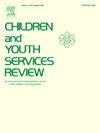预测0至4岁的青少年护理:2015-2019年荷兰人口登记数据研究
IF 1.7
2区 社会学
Q1 FAMILY STUDIES
引用次数: 0
摘要
目的:青少年关爱服务为面临子女抚养问题的家庭提供支持。如果提供预防性支持,就可以避免使用这种服务。我们开发了青少年护理风险预测模型,以实现风险分层方法。方法使用荷兰2015-2019年出生登记数据,包括社区特征、社会经济地位、父母健康和行为、过去出生结果、当前出生结果和家庭特征。主要结果是0-4岁青少年护理服务的使用情况。对出生前一年、出生时、出生后一年和出生后两年的评估时刻(分别为模型1-4),导出了多变量Cox回归模型。结果整个队列包括776,559名荷兰新生儿,其中32,290名至少接受过一次青年护理轨迹(4.2%)。每个完整模型的性能与各自的精简模型相当。简约模型1的受试者工作特征曲线下面积(AUC)为0.760(95%置信区间= 0.757-0.763)。在随后的每个评估时刻,模型性能的改善幅度最小,简约模型4的AUC为0.798(0.794-0.801)。最强的预测因子包括青少年护理史、父母教育程度、母亲精神科药物处方及母亲工作状况。当将任何青少年护理风险最高的队列中10%归为阳性时,阴性预测值高(≥0.972),阳性预测值低(≤0.164)。结论如果假阳性检测的后果可以减轻,那么筛查可以在家庭参与过度负担的青少年护理服务之前提供缓解。本文章由计算机程序翻译,如有差异,请以英文原文为准。
Predicting youth care between 0 to 4 years of age: a 2015–2019 Dutch population register data study
Purpose
Youth care services support families facing problems with raising children. Use of such services may be avoided if preventative support were offered. We developed youth care risk prediction models to enable risk stratification approaches.
Methods
We used Dutch registry data of births between 2015–2019, including neighbourhood characteristics, socioeconomic status, parental health and behaviours, past birth outcomes, current birth outcomes, and household characteristics. The primary outcome was use of youth care services between the ages of 0–4 years. Multivariable Cox regression models were derived for assessment moments one year before birth, at birth, one year after birth, and two years after birth (models 1–4, respectively).
Results
The full cohort consisted of 776,559 Dutch births, of which 32,290 underwent at least one youth care trajectory (4.2 %). Each full model performed equivalently to the respective parsimonious model. Parsimonious model 1 achieved an area under the receiver operating characteristic curve (AUC) of 0.760 (95 % confidence interval = 0.757–0.763). Model performance improved minimally at each subsequent assessment moment, reaching an AUC of 0.798 (0.794–0.801) for parsimonious model 4. The strongest predictors included prior youth care, parental educational level, maternal psychiatric medication prescription, and maternal job status. When classifying 10 % of the cohort with the highest risk of any youth care as positive, the negative predictive value was high (≥0.972) and the positive predictive value was low (≤0.164).
Conclusion
If the consequences of false positive tests can be mitigated, then screening may offer relief to families before involvement of the over-encumbered youth care services.
求助全文
通过发布文献求助,成功后即可免费获取论文全文。
去求助
来源期刊

Children and Youth Services Review
Multiple-
CiteScore
6.30
自引率
6.10%
发文量
303
期刊介绍:
Children and Youth Services Review is an interdisciplinary forum for critical scholarship regarding service programs for children and youth. The journal will publish full-length articles, current research and policy notes, and book reviews.
 求助内容:
求助内容: 应助结果提醒方式:
应助结果提醒方式:


